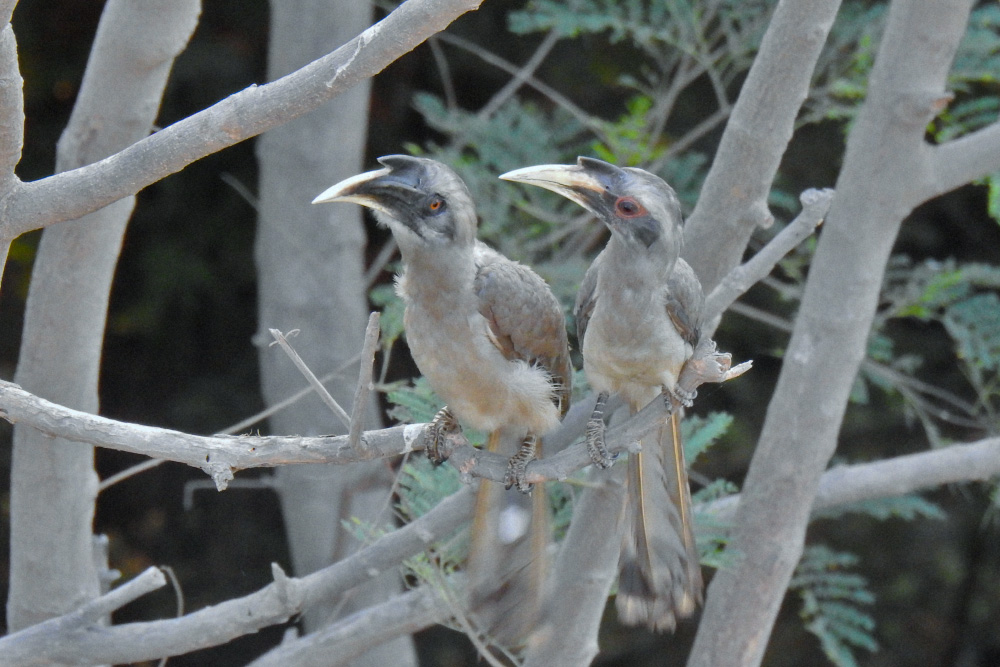 "
"
It’s been over a year since the Indian Grey Hornbill (Ocyceros birostris) decided to make their presence conspicuous in the Malabar Hill area of South Mumbai, just as the peacocks of ‘Doongerwadi’ and the Raj Bhavan have made theirs for some time now.
These ‘urban hornbills’, as my friend and ace birder Shashank Dalvi calls them, are seen mostly at dawn and dusk flying around from tree to tree as they are mostly arboreal in nature.
The male has a larger casque on a dark bill and the culmen (the upper ridge of the bill) and mandible are yellowish. The eyes are red. Also, the bare skin around the eyes are dark. The female, has a more yellowish (and smaller) bill and reddish eye patch. Juveniles lack the casque, and the skin around the eyes is dull orange. Read more about the species on Hornbill Watch.
It all started with a couple of individuals, which then increased to 4 in a span of 3-4 months. Today the number stands at 10 and this could mean that they are successfully breeding in an urban area. I have recorded them having a dust bath, jousting, bill grappling, basking in the sun, feeding on ficus fruits and insects, even seeing them observing their reflection on darkened windows.
The call is a loud, distinctive and shrill similar to that of a black kite and can be heard throughout the day from the Hanging Garden Area to Raj Bhavan. There have been instances of sightings at the Cricket Club of India, Churchgate, Colaba area and even the Dadar Parsi Colony.
Similar: Indian Grey Hornbill Nesting Adaptability, Indore.

 CI is a non-profit, non-commercial portal that aims to facilitate wildlife and nature conservation by providing reliable information and the tools needed to campaign effectively.
CI is a non-profit, non-commercial portal that aims to facilitate wildlife and nature conservation by providing reliable information and the tools needed to campaign effectively.
Chosen as 'Picture of the Week'
This shows the adaptability of these 'urban hornbills' but also indicates a greater need to protect existing big and old trees in South Mumbai, which are traditionally used by hornbills and other cavity breeders for nesting.